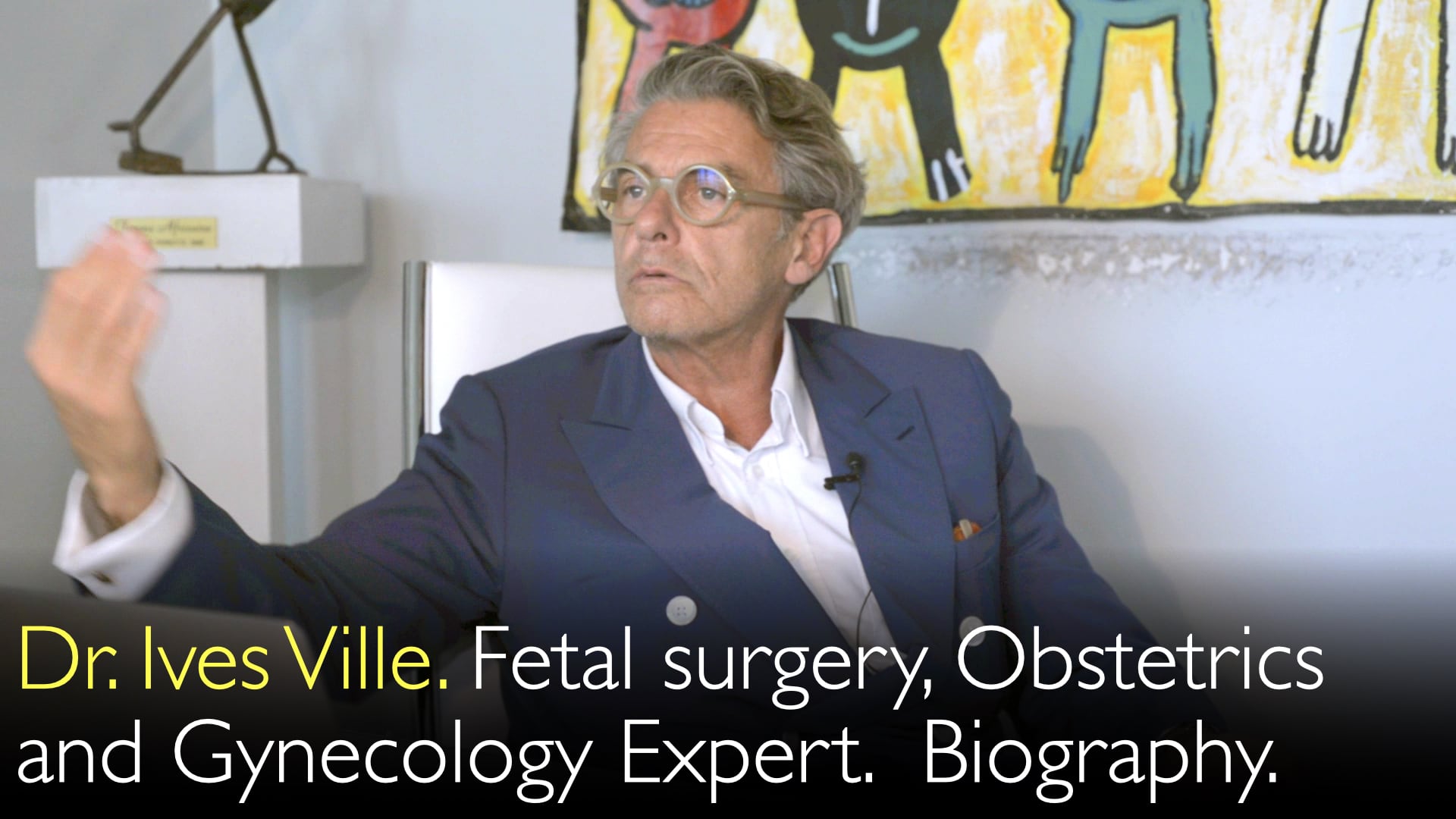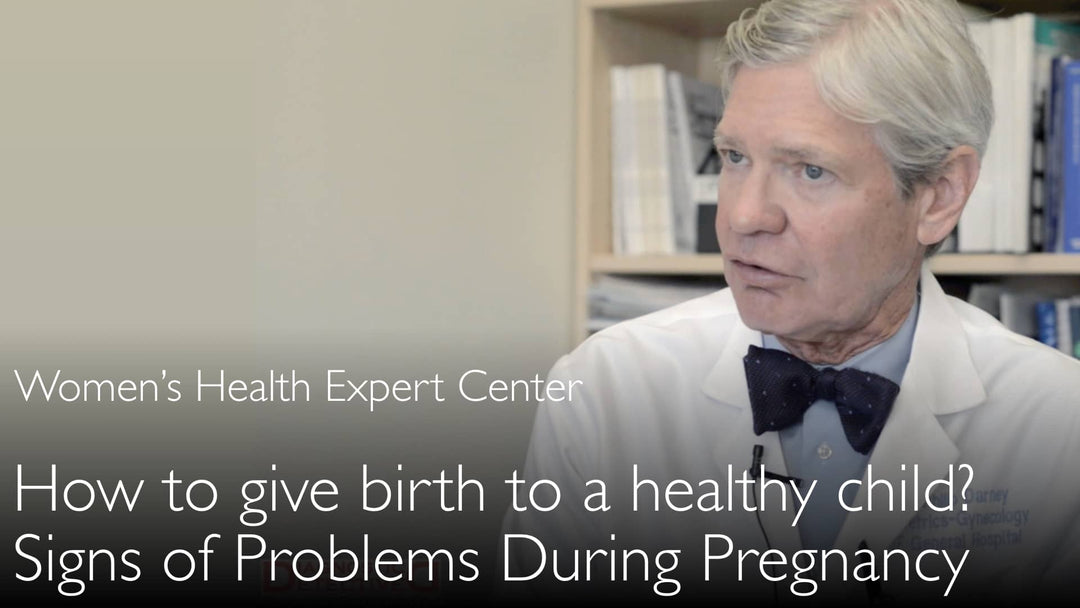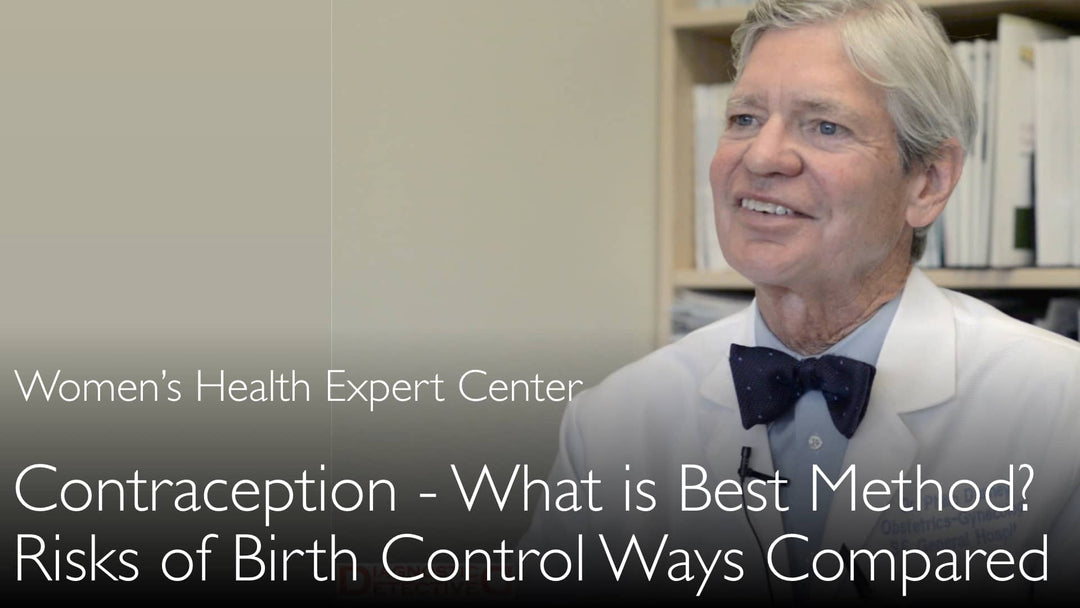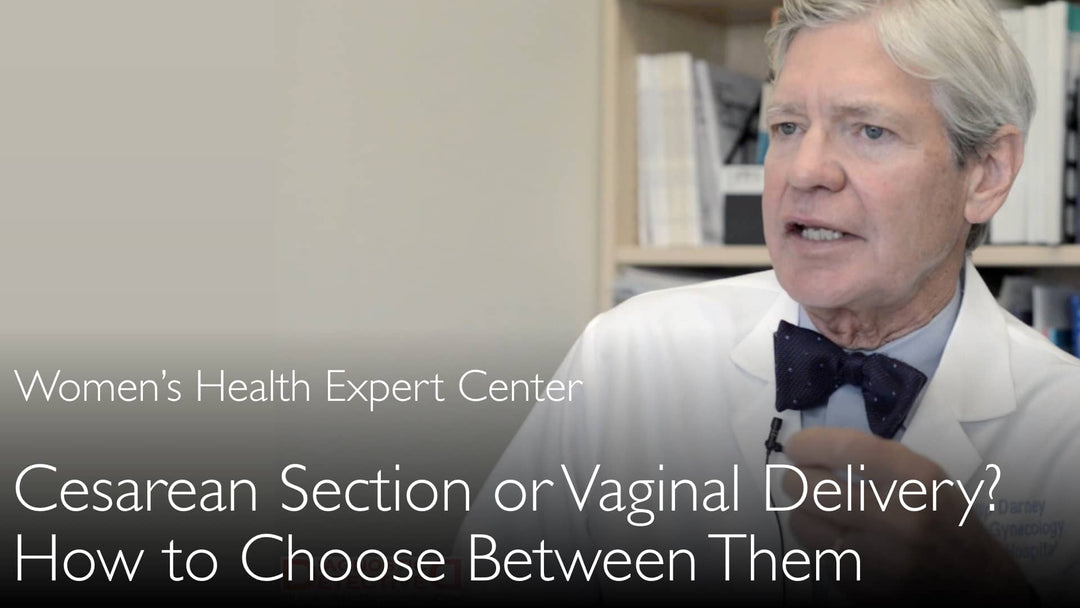O renomado especialista em medicina materno-fetal e cirurgia fetal endoscópica, Dr. Yves Ville, explica como intervenções fetais tratam condições congênitas potencialmente fatais. Ele detalha a evolução das técnicas minimamente invasivas, realizadas na placenta ou no feto, que melhoram drasticamente a sobrevida de gêmeos com síndrome de transfusão feto-fetal (STFF). A cirurgia fetal também é aplicada no tratamento de hérnia diafragmática congênita grave e de arritmias fetais raras e resistentes a medicamentos. Dr. Yves Ville aborda ainda os critérios rigorosos para seleção de diagnósticos em que os benefícios superam os riscos de parto prematuro.
Cirurgia Fetal Endoscópica: Tratamento de Anomalias Congênitas Antes do Nascimento
Navegar para a Seção
- Tratamento da Síndrome de Transfusão Feto-Fetal
- Complicações da Gravidez Monocoriônica
- Correção da Hérnia Diafragmática Congênita
- Intervenção na Arritmia Fetal
- Controvérsia da Espinha Bífida
- Indicações Futuras da Cirurgia Fetal
- Transcrição Completa
Tratamento da Síndrome de Transfusão Feto-Fetal
A cirurgia fetal endoscópica teve seu primeiro sucesso no tratamento da síndrome de transfusão feto-fetal (STFF). O Dr. Yves Ville explica que essa condição afeta gêmeos monocoriônicos que compartilham uma única placenta. Conexões vasculares anômalas na superfície placentária causam um desequilíbrio no fluxo sanguíneo entre os gêmeos. O procedimento pioneiro envolve a coagulação desses vasos compartilhados usando um micro-endoscópio.
O Dr. Yves Ville observa que a própria gravidez facilita essa cirurgia. O líquido amniótico abundante proporciona uma visão clara do campo operatório. Essa técnica, desenvolvida em 1991, tornou-se o padrão de cuidado global. Transformou os resultados, reduzindo a taxa de mortalidade de 90% para uma taxa de sobrevivência de 90% nos gêmeos afetados.
Complicações da Gravidez Monocoriônica
A cirurgia fetal aborda várias complicações potencialmente fatais em gestações monocoriônicas. O Dr. Yves Ville descreve a restrição seletiva do crescimento intrauterino (RCIU seletiva). Nessa condição, um dos gêmeos apresenta restrição grave de crescimento e está doente. A cirurgia a laser pode desconectar as circulações para salvar o gêmeo mais saudável.
Outra indicação é a interrupção seletiva por anomalia fetal letal. Cirurgiões podem ocluir o cordão umbilical do gêmeo afetado usando laser ou pinça bipolar. Isso poupa o co-gêmeo saudável. O Dr. Ville também destaca a sequência TRAP (Perfusão Arterial Reversa em Gêmeos). Isso envolve coagular o cordão de um gêmeo acárdico inviável para prevenir sobrecarga cardíaca no gêmeo bombeador.
Correção da Hérnia Diafragmática Congênita
A hérnia diafragmática congênita (HDC) grave é outra indicação importante para intervenção fetal. O Dr. Yves Ville explica a fisiopatologia. Órgãos abdominais herniam para o tórax através de um orifício diafragmático. Isso comprime os pulmões e prejudica gravemente seu desenvolvimento.
O procedimento endoscópico, chamado oclusão traqueal endoscópica fetal (OTEF), bloqueia temporariamente a traqueia fetal. Um balão é colocado dentro da traqueia para reter o líquido pulmonar. Isso aumenta a pressão intratraqueal e promove o crescimento pulmonar. Após três a quatro semanas, o balão é removido. O Dr. Anton Titov discute o impacto significativo. Essa intervenção pode aumentar a sobrevivência de 10% para 20-30% nos casos mais graves.
Intervenção na Arritmia Fetal
A cirurgia fetal pode tratar casos raros e resistentes a medicamentos de taquiarritmia fetal. O Dr. Yves Ville especifica que isso é para flutter atrial. Essa arritmia pode levar a insuficiência cardíaca manifesta se a terapia farmacológica falhar. A técnica endoscópica adapta instrumentos usados para outras condições.
Cirurgiões passam uma pequena sonda de marcação no esôfago do feto, atrás do coração. Eles então marcapasseiam o coração para interromper o ritmo anormal. Ao reiniciar, o coração frequentemente retoma um ritmo sinusal normal. O Dr. Yves Ville enfatiza que essas indicações são extremamente raras, mas demonstram a versatilidade do instrumental cirúrgico fetal.
Controvérsia da Espinha Bífida
A cirurgia fetal para espinha bífida representa uma expansão controversa das indicações. O Dr. Yves Ville observa que o princípio fundamental da cirurgia fetal era prevenir morte ou sequelas graves irreversíveis. A espinha bífida normalmente não causa morte fetal. O objetivo é melhorar os resultados neurológicos, particularmente a função motora, mas não cura a incontinência.
O procedimento envolve fechar endoscopicamente o defeito do mielomeningocele no útero. O Dr. Ville observa uma divisão cultural e legal. Na Europa, onde a interrupção é mais acessível, essa cirurgia é rara. Nos EUA e outras regiões, é oferecida com mais frequência como alternativa. Isso expande os limites do quadro ético central da cirurgia fetal.
Indicações Futuras da Cirurgia Fetal
O futuro da cirurgia fetal pode incluir novas condições, mas enfrenta obstáculos significativos. O Dr. Yves Ville discute o teratoma sacrococcígeo, um tumor altamente vascularizado. Pode levar à insuficiência cardíaca fetal, mas tentativas endoscópicas de tratá-lo falharam até agora. Isso pode permanecer uma indicação para cirurgia fetal aberta, que envolve abrir o útero.
O Dr. Ville expressa forte cautela contra técnicas de cirurgia fetal aberta. Os riscos maternos são substanciais, incluindo ruptura uterina e acretismo placentário em gestações futuras. Ele declara preferência por desenvolver apenas indicações minimamente invasivas e endoscópicas. Isso prioriza a segurança materna enquanto avança o cuidado fetal, um sentimento que ele acredita ser compartilhado por muitos pacientes e profissionais.
Transcrição Completa
Dr. Anton Titov, MD: O senhor é um dos principais especialistas em medicina materno-fetal e anomalias congênitas fetais. Também é especialista em cirurgia fetal a laser durante a gravidez. Quais são os problemas médicos típicos que o senhor resolve para gestantes? Quais diagnósticos podem ser tratados com cirurgia fetal endoscópica?
Dr. Yves Ville, MD: Correto. As condições precisam ser reconhecíveis antes do tratamento. Existe um número limitado delas. Cronologicamente, a primeira utilizada para tentar e depois padronizar a endoscopia fetal foi uma condição que afeta gêmeos monocoriônicos. Chama-se síndrome de transfusão feto-fetal.
Não se opera nos fetos em si, mas opera-se na placenta. Os gêmeos compartilham a mesma placenta. Essa placenta mostra características típicas de compartilhamento de parte da placenta através de vasos que percorrem as placas coriônicas. Uma vez que se reconhece o padrão, também se pode coagular esses vasos compartilhados entre os dois fetos. Fizemos isso em 1991 usando micro-endoscopia desenvolvida para outros fins, como cirurgia de nariz e garganta e urologia pediátrica.
Esses endoscópios têm menos de dois milímetros de diâmetro. Consideramos aceitável introduzi-los através de um trocarte percutaneousmente pelo abdômen materno até o útero e o líquido amniótico. A própria condição da gravidez auxilia muito a cirurgia porque produz muito líquido amniótico, o que dá uma visão muito clara do campo operatório. Isso não acontece com frequência nas outras condições que vou discutir. Mas esta foi particularmente favorável.
Nos últimos quase 30 anos, essa técnica de cirurgia fetal endoscópica tornou-se o padrão de cuidado para essa condição e outras relacionadas à monocorionicidade. Significa que dois fetos compartilham a mesma placenta. A cirurgia placentária foi a primeira tentativa e o primeiro sucesso.
Isso também se aplica à restrição seletiva de crescimento em um gêmeo monocoriônico. Quando um desses dois gêmeos, o menor, está muito doente, às vezes é salvador, pelo menos para o outro gêmeo, desconectar os dois gêmeos. Também é às vezes necessário ou aceitável coagular o cordão umbilical de um gêmeo quando há uma malformação letal em um gêmeo.
Portanto, é uma interrupção seletiva da gravidez ocluindo o cordão umbilical. Isso pode ser feito por laser ou coagulação do cordão com pinça bipolar, mas isso é então sob orientação ultrassonográfica. Então é um vasto espectro de doenças relacionadas à monocorionicidade, onde ou se tenta salvar ambos os fetos, como na transfusão feto-fetal, ou se quer garantir que o gêmeo normal sobreviva vivo e bem.
Deve-se então separar de um feto muito doente ou coagular o cordão do feto muito doente. Ou coagular o cordão do que não é exatamente um feto, como o gêmeo acárdico. A sequência TRAP, sequência de perfusão arterial reversa em gêmeos, onde há uma massa de tecido fetal, mas não é nem embrião nem feto. Isso está preso a um cordão e está causando sobrecarga cardíaca em um feto normal ao lado. Então deve-se desconectar esse tipo de tumor do gêmeo.
Isso é tudo sobre monocorionicidade. No resto do mundo, esse espectro de doença monocoriônica representa provavelmente 80% da cirurgia fetal ou intrauterina.
Depois, há outras indicações desenvolvidas posteriormente. Uma está relacionada à hérnia diafragmática, uma hérnia diafragmática congênita, onde um orifício no diafragma permite que órgãos abdominais subam do abdome para o tórax. Isso comprime os pulmões, e o problema aqui é o desenvolvimento pulmonar.
Para ajudar a lutar contra a pressão mecânica das vísceras no tórax e permitir mais espaço para os pulmões crescerem, pode-se obstruir temporariamente a traqueia do feto. Para isso, é intubação fetal. Usa-se o mesmo equipamento da síndrome de transfusão feto-fetal. Entra-se no útero, no líquido amniótico, abre-se a boca, entra-se na traqueia. Insere-se um balão que é inflado.
Deixa-se por três a quatro semanas para dar tempo a esses pulmões crescerem e se beneficiarem da secreção dos fatores de crescimento bronquial terminal e alveolar. Depois volta-se da mesma forma e remove-se o balão ou o plug, como é chamado. Quando esse bebê é entregue, otimizam-se as chances de esses bebês conseguirem respirar ou serem reanimados.
Diria que nos casos mais graves, onde a sobrevivência é cerca de 10%, assume-se agora que se aumenta a sobrevivência duas ou três vezes. Portanto, não é uma cura definitiva, mas é uma grande melhoria. Para transfusão feto-fetal, passamos de 90% de morte para 90% de sobrevivência, então o benefício é muito mais claro.
Após a hérnia diafragmática congênita, pensamos que poderíamos usar o mesmo dispositivo em outra condição, que é a arritmia fetal, taquiarritmia. Em uma forma particular de arritmia, isto é, flutter. Flutter é uma conexão errada entre as aurículas e os ventrículos, onde as aurículas batem muito mais rápido que os ventrículos. A conexão entre átrios e ventrículos acontece apenas uma em quatro ou algo assim.
Então isso evolui para insuficiência cardíaca. Quando há insuficiência cardíaca manifesta e a terapia farmacológica falhou—temos vários medicamentos que podemos tentar para parar isso—então usamos os mesmos instrumentos endoscópicos. Em vez de mirar a traqueia, vamos para o esôfago. Com o endoscópio, também passamos uma pequena sonda, uma sonda de marcação, a mesma sonda de marcação que pediatras usam nessas condições após o nascimento.
Vamos atrás do coração, atrás da aurícula que está batendo erroneamente, e apenas marcapasseamos o coração. O coração para e depois recomeça. Geralmente, recomeça no ritmo correto. Então fizemos isso algumas vezes. As indicações são extremamente raras. É um problema raro. Esse problema geralmente é resolvido com medicamentos, mas para as formas resistentes, podemos usar cirurgia fetal.
Desenvolvemos uma caixa de ferramentas bastante baseada no acesso endoscópico ao feto. Então uma equipe em Houston usou endoscopia fetal para fechar espinha bífida no útero. Esta é uma indicação muito mais controversa porque não é uma questão de vida ou morte. O que fundamentou a cirurgia fetal é uma condição letal se não tratada antes do nascimento, ou sequelas graves irreversíveis se não tratada antes do nascimento.
Tudo o mais realmente deve ser deixado para depois do nascimento, pois a desvantagem e o risco da cirurgia fetal são evidentes ao se invadir o útero; pode-se causar trabalho de parto prematuro. O fundamento básico da cirurgia fetal era prevenir a morte dos fetos. Quando passamos para a espinha bífida, isso quebra essa regra porque a espinha bífida não será curada. As sequelas da espinha bífida ainda estarão presentes.
Mas um grande estudo clínico mostrou que pode haver alguma melhora na capacidade motora. A cirurgia fetal não resolve os problemas de incontinência na espinha bífida. Então, várias equipes seguiram em frente. Na Europa, a indicação para espinha bífida é extremamente rara, embora a espinha bífida não seja incomum, porque na Europa geralmente opta-se pela interrupção da gravidez.
Nos EUA e em outras partes do mundo, onde a interrupção da gravidez não é tão acessível e é menos solicitada, esta é uma alternativa que está sendo desenvolvida. Temos alguns casos que realizamos todos os anos aqui também. Fazemos da mesma forma com o endoscópio no útero. Mas para facilitar os movimentos, porque agora estamos operando diretamente nas estruturas, abrimos o abdômen materno, mas não o útero.
Fechamos a espinha bífida com outra porta e colocamos alguns pontos após dissecar a lesão. Então, esses mielomeningoceles estão exatamente no limite do que a cirurgia fetal é indicada. Provavelmente haverá algumas outras indicações no futuro para a endoscopia fetal.
Mas um dos grandes fracassos ou obstáculos é uma condição chamada teratoma sacrococcígeo, um tumor massivo do sacro e do cóccix. Como o nome diz, o teratoma sacrococcígeo é muito vascularizado. Ele progride muito rapidamente para insuficiência cardíaca. Mas uma massa de tecido tão grande e tantos vasos que, até agora, todas as tentativas por endoscopia ou sob ultrassom falharam.
Essa pode ser uma das últimas indicações para cirurgia aberta intrauterina, onde se abre o útero. Agora, ao fazer isso, novamente, estamos entrando em outro território, que é a morbidade que estamos causando na mulher. Pelo menos em nossa prática, isso é algo que não queremos ultrapassar. É a linha que não queremos cruzar.
Não queremos expor essas mulheres a um risco significativo durante esta gravidez ou para a próxima gravidez. Houve relatos dessa cirurgia fetal aberta. As sequelas no útero, o risco de ruptura uterina, o risco de placenta acreta, a placenta que fica presa na cicatriz. Então, não queremos cruzar essa linha.
Estamos prontos para desenvolver qualquer outra indicação que possa surgir, mas não queremos abrir o útero. As mulheres francesas também não são muito favoráveis a isso. Na maioria. Provavelmente é cultural. E provavelmente também é legal, já que na França a interrupção da gravidez é permitida até o termo quando a doença fetal é grave.


![Cirurgia fetal endoscópica: quando e em quais casos ela pode beneficiar o feto? 1. [Parte 1 e 2]](http://diagnosticdetectives.com.br/cdn/shop/products/Dr_Ives_Ville_Obstetrics_fetal_surgery_pregnancy_infections_CMV_second_opinion_dr_anton_titov_Diagnostic_Detectives_Network_DiagnosticDetectives.Com.002.jpg?v=1660998401&width=1080)
![Cirurgia fetal endoscópica: quando e em quais casos ela pode beneficiar o feto? 1. [Parte 1 e 2]](http://diagnosticdetectives.com.br/cdn/shop/products/Dr_Ives_Ville_Obstetrics_fetal_surgery_pregnancy_infections_CMV_second_opinion_dr_anton_titov_Diagnostic_Detectives_Network_DiagnosticDetectives.Com.002_7d1d5dd7-18cb-46f8-84a8-7a549816b15d.jpg?v=1660998410&width=1080)
![Cirurgia fetal endoscópica: quando e em quais casos ela pode beneficiar o feto? 1. [Parte 1 e 2]](http://diagnosticdetectives.com.br/cdn/shop/products/Dr_Ives_Ville_Obstetrics_fetal_surgery_pregnancy_infections_CMV_second_opinion_dr_anton_titov_Diagnostic_Detectives_Network_DiagnosticDetectives.Com.002.jpg?v=1660998401&width=720)
![Cirurgia fetal endoscópica: quando e em quais casos ela pode beneficiar o feto? 1. [Parte 1 e 2]](http://diagnosticdetectives.com.br/cdn/shop/products/Dr_Ives_Ville_Obstetrics_fetal_surgery_pregnancy_infections_CMV_second_opinion_dr_anton_titov_Diagnostic_Detectives_Network_DiagnosticDetectives.Com.002_7d1d5dd7-18cb-46f8-84a8-7a549816b15d.jpg?v=1660998410&width=720)





